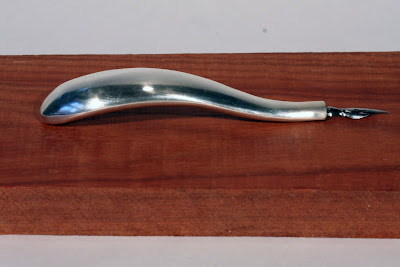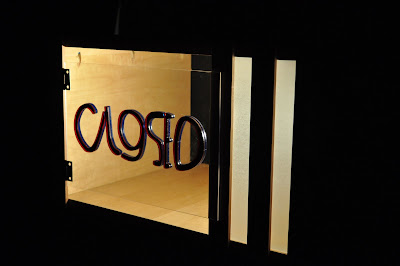
Anisha's Design Blog
Projects and Reflections Related to the Design Program at Stanford
Saturday, February 19, 2011
illuminating object

Friday, February 18, 2011
Car Part Toothbrushes


Thursday, February 17, 2011
Open Silver Ring


Wednesday, February 16, 2011
Pens in the Style of...





Personal Statements: Wordplay






Tuesday, June 15, 2010
Enter: The StackJack Water Filter

Sukha and his classmates led us to our Point of View:
Carefree curious children at rural Cambodian schools need an educational and engaging way to provide themselves with clean drinking water so they can thrive and be examples of healthy behavior in their communities.
In Cambodia, untreated water and poor sanitation are the leading causes of 9.4 million cases of diarrhea per year, which leads to 10,000 deaths. Children are especially vulnerable: diarrheal disease kills 14 out of every 1000 children. Furthermore, 1.8 million Cambodian households lack access to clean water and sickness resulting from unclean water and poor sanitation costs Cambodian households 80 M in lost productivity and medical expenses each year. Our partner Hydrologic, a subsidiary of International Development Enterprises (IDE) Cambodia, aspires to become the leading distributor of effective and affordable hygiene and sanitation products in Cambodia.
My Extreme Team partnered with Hydrologic to develop a water purification system suitable for school use to complement Hydrologic’s Rabbit Water Filter Home line (so named because rabbits are seen as wise in Cambodia, despite their non-existence there!). It meets the need of providing an affordable and robust larger scale water filter for this particularly vulnerable and influential population.

Enter: The StackJack Rabbit Water Filter.

Our Functional Prototype, successfully tested with 2nd graders!


Continuous Flow Mechanism Details:
Our Theory of Change (the big picture):
If rural schools have access to a community water filter, it will save families in the community money spent purifying water and treating the diseases that result from unpurified water, as well as improve children’s ability to study, socialize, and reach their education goals.
Additionally, we believe that children are agents of change in their communities and that they have the power and ability to change habits, creating a lasting behavior change and impact.
The presentation went wonderfully – it was really satisfying to see that the questions people asked us were about details of the filter, details that implied that they bought into the concept and were excited and thinking about the logistics of the installation and long-term maintenance of the StackJack filter.
Exit: Year 1 of Grad School.
A HUGE shout-out to the other members of my Extreme Team: Alexa Bisinger (MD/MBA 1), Danielle Garcia (GSB 1), and Albert Lai (MS, CS)!!
I arrived in Boston today to intern at IDEO this summer. Will do my best to update more often with summertime adventures!
Saturday, May 8, 2010
Open/Closed Shadow Sign



Thursday, April 1, 2010
Needfinding in Cambodia



Thursday, March 11, 2010
Words of Wisdom - Courtesy of my Classes
Thursday, January 28, 2010
In Need of a Tow
Sunday, January 17, 2010
Chiaroscuro

Saturday, January 2, 2010
Monday, December 7, 2009
Kiwi Sketch

Saturday, December 5, 2009
DP3: Inciting Behavior Change with Pirates!

Sunday, November 29, 2009
First post on design + education
Monday, November 16, 2009
Art: Poster Design

Another feature I liked was posters that played with words. I started to play with the letters BODY and soon found that they easily could be manipulated to evoke the shape of a woman’s body. I used this as the base for my poster.
I then determined what emotion I wanted to convey with my poster. The theme “Love Your Body” is about celebration – a celebration of the female shape, in all its forms. I wanted everything about the poster to convey this – the colors, the body shape, the text, the imagery. I started with the body shape… what is celebration about? It’s about dancing, hopping, and letting the limbs be free. As such, I looked for pictures of a woman jumping in the air as a base for my poster. I converted her body into blocks of color in photoshop (and added an arm), but the image still felt incomplete. There were two major issues: 1) It wasn’t explicit enough and 2) a lot of people were not noticing that “BODY” was used to form the shape of her body.
The feedback I received led me to figure out what was missing from the poster: what was she celebrating? She was celebrating a triumph over all of the negative forces related to body image that are out there. It appeared as though her hand could be holding something, so I decided to give her a “love your” umbrella to highlight “body” on the body. It also had a symbolic purpose – she could use it to shield her from “insult rain” filled with negative words describing bodies. I wanted her to hold it up in triumph, so I angled the umbrella a bit, so it feels as though she is triumphantly dancing through the rain with the umbrella as insults bounce off its edges.
Another key challenge I faced was figuring out how to make her look racially ambiguous, since this is a poster that should appeal to a wide variety of people. I combated this problem in two ways: 1) I used a “skin tone” that was not real, a warm gray, to give the girl the appearance of a silhouette and 2) I left off eyes and a nose, as mouths are more universal in shape than either eyes or noses. I’m generally happy with how the imagery turned out and plan to play with the font choice and text placement at the bottom a little more. Here's the final result:

Sunday, November 1, 2009
dp2- Teenagers and Collaboration
The design principles that we settled upon are as follows. We wanted our product to:
1) lower the barrier teens have to trying new things
2) empower teens to teach and learn from each other
3) assist in gaining life experiences to prove improve self-confidence and help build rapport with adults
This story walks you through a day of the life of a teen using our product system: Everywear
I wake up, shower, eat breakfast, and take my uniform shirt off its inductive charging hanger. I scroll through the default shirt images and choose my favorite one: Spongebob Squarepants. My shirt beeps to remind me that I have 5 minutes to leave in order to be on time for school.
I get nervous as I notice the boy I have a crush on. As I walk near him, our shirts both switch to images of Ne-yo. I notice the picture and ask him if he heard about the concert on Friday. He says that his mom won’t let him go but that he really likes the new cd. Our shirts start to glow yellow and we realize that we’d better get to class before we’re late.
As I enter history class, my shirt glows green again to indicate that I am on time. The walls have been converted to images of
"I have a Dream" speech and written history on the
My teacher begins to present the class material, and pauses in 10 minutes. "Based on we just learned, which is not one of the key points made in MLK's "I have a dream" speech? We all input our answers, and teacher automatically receives the feedback that only 30% of us got the right answer. "Alright, class, we are not ready to move on, we need to spend 10 minutes on additional information about this topic. The 6 different ways you can learn more about this are now on your tables.”
I see on mine that I can watch the speech live, read a transcript of the speech, or watch a youtube re-mixed musical enactment of it, among my options. I decide to watch the musical. I am also interested in a
couple of the other options, so I drag them to the "save to
backpack" icon so I can look at them later. My teacher puts up another similar quiz question, and we are again given the opportunity to respond. This time 90% of us get the answer correct. "For those of you who understood the question this time, submit a way that helps you remember the answer." After class, she goes through the answers and submits one to a nationwide data library to be used for future classes. This registers a collaboration point for our school. The schools that receive the most collaboration points in the city receive money from the government and private sponsors to spend on events during the year, where we get to invite kids from nearby schools. Class ends, I go to my other morning classes, and then I head to lunch.
As I walk to sit down with my friends, I notice Melanie, someone I’ve seen in my classes, but don’t really know. As I approach Melanie, her shirt changes to say she wants to learn piano, so I suggest we meet after-school so that I can teach her and practice some new songs I’m working on at the after-school learning center. "That would be great!" says Melanie. Thanks! I leave to go sit with my friends.
During lunch, my friends start discussing new youtube videos. "Wait, did any of you see the viral video about the dancing mouse?" "No!" I scroll to the still frame of the video that I have uploaded as one of my default shirt images to show my friends. As lunch finishes, I return to class.
After school, I walk to the after-school learning center to work on homework and practice piano. I sit down at one of the collaboration tables, which instantly shows my homework assignments and I start to work on my math. I have a question and looks around to see what other people are working on, which is displayed on the walls behind them. One of the others is also working on my math assignment, so I write a quick digital note asking for help on question 13 and fling the note electronically to the other student. The other student walks over and helps me, which logs a collaboration point for him. 
After finishing his math homework, I write a new note, explaining that Melanie and I are about to go practice piano to invite anybody else who's interested. I fling the note into a "pile" in the center of the table, which automatically displays it on the wall near me. When I teach new kids piano, I automatically gets individual collaboration points that will give me money to spend at stores that have joined the school's collaboration point program in exchange for advertising.
At the end of the day, my mom comes to pick me up and it's time for dinner. We go to Dionni's, my favorite pizza place, and I go in to pick up a pizza for the family. I pay for it with my collaboration points because Dionni's is a participating business partner in the collaboration project. As I’m paying for the pizza, the person working at the counter asks him if he'd like a free Dionni's picture upload for his shirt. "Yeah! I love Dionni’s!” The image I chose is attached to his account and now accessible to him when he goes home. I go home, hang my shirt back up for charging and upload the new Dion's picture as one of my new default images.
















